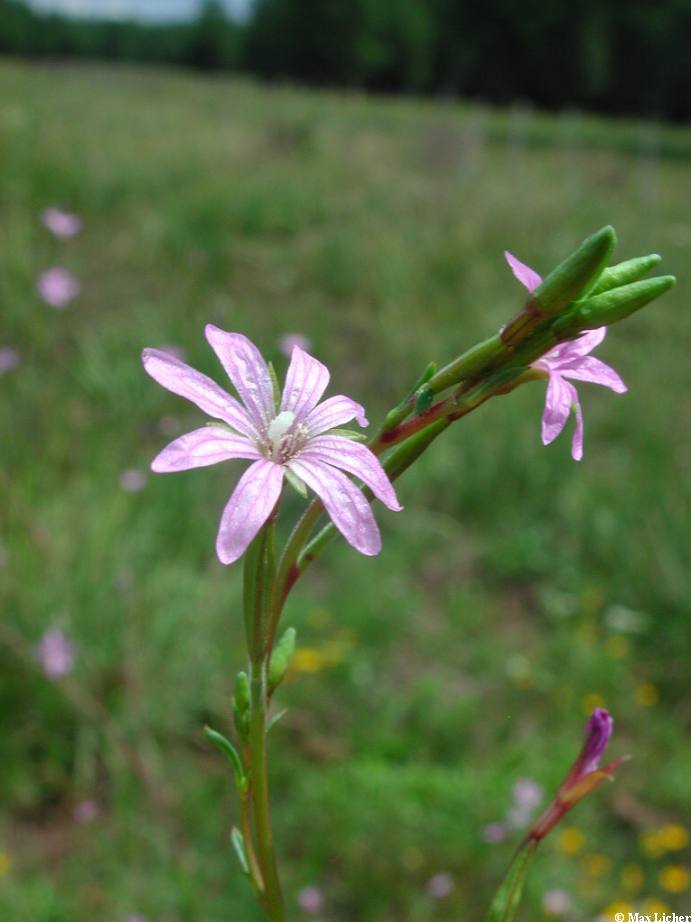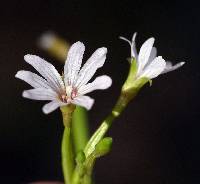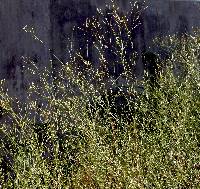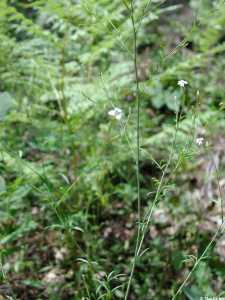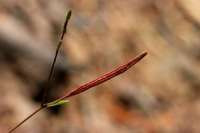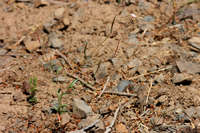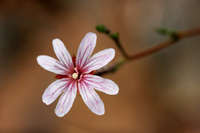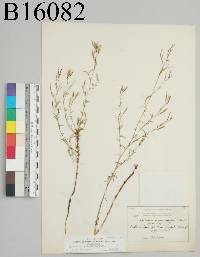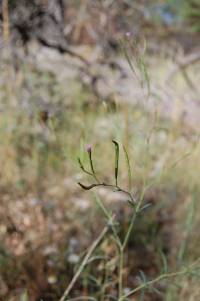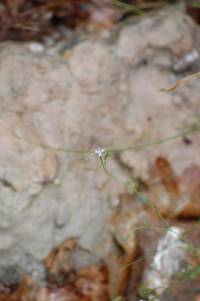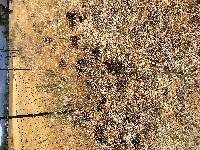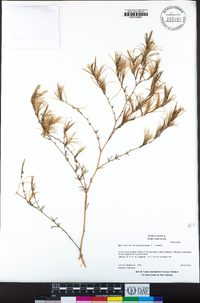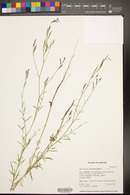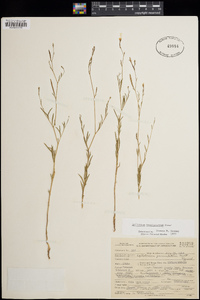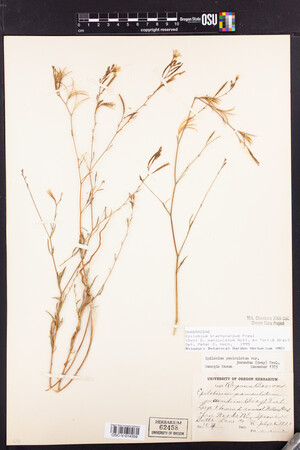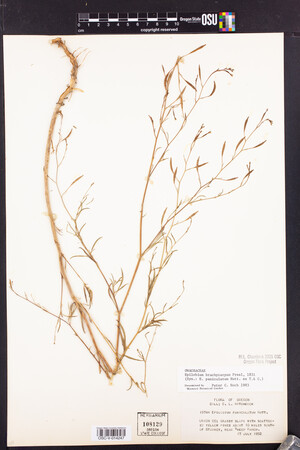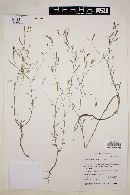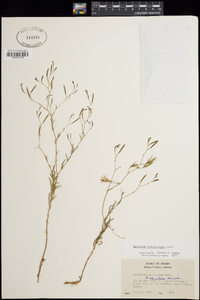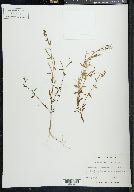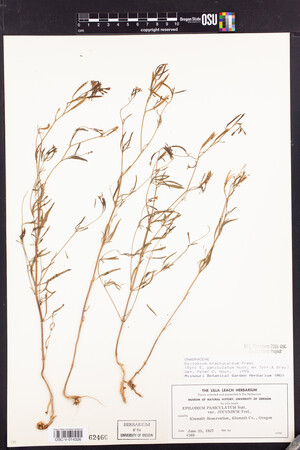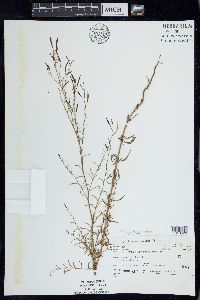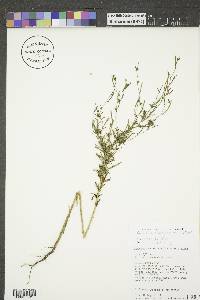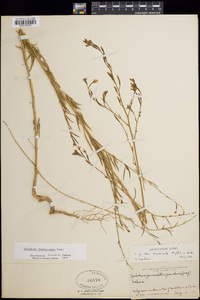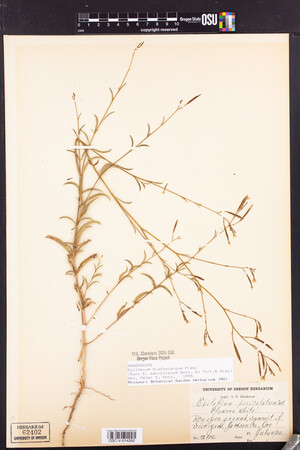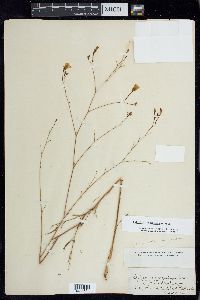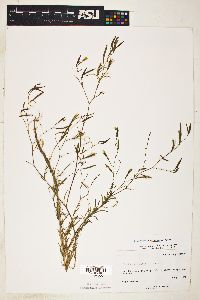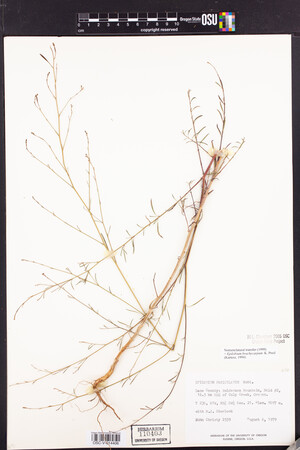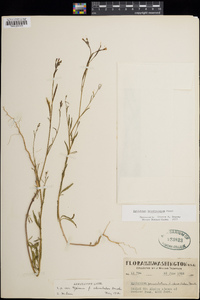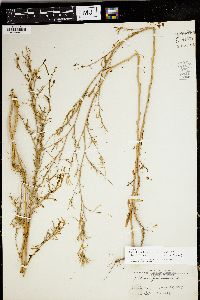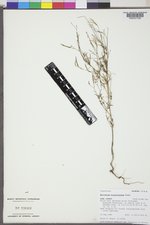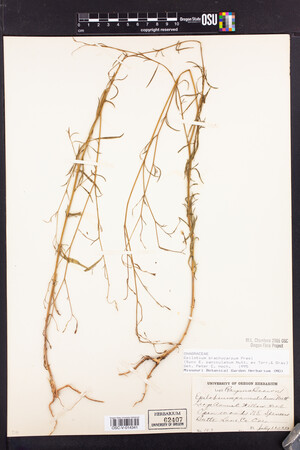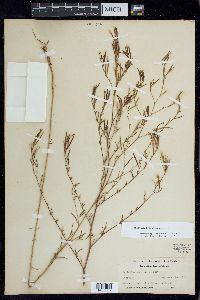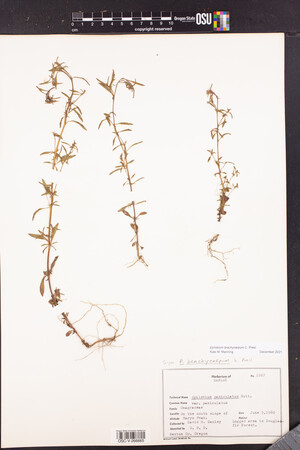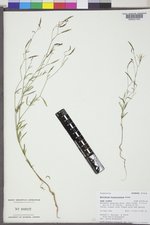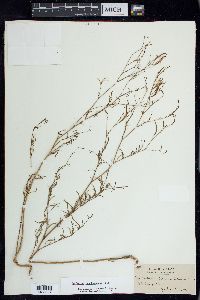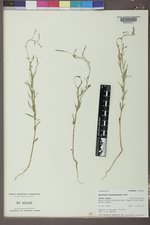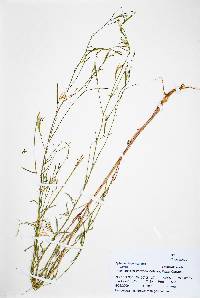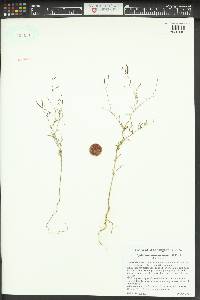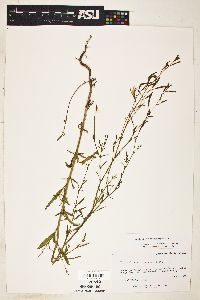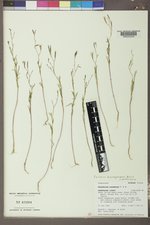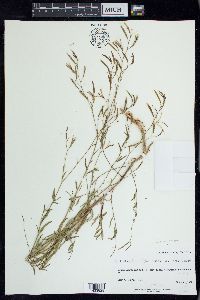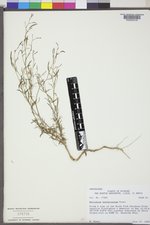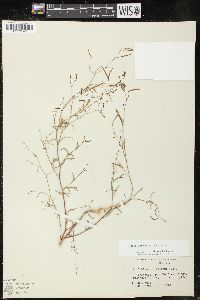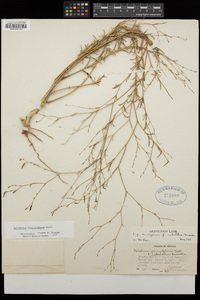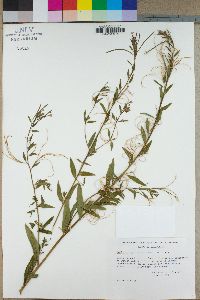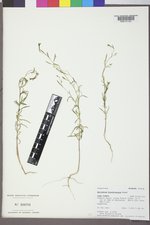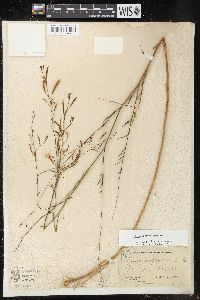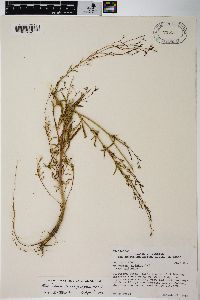
|
|
|
|
Family: Onagraceae
Tall Annual Willowherb, more...autumn willowherb, autumn willowweed
[Epilobium altissimum, moreEpilobium apricum Suksd., Epilobium fasciculatum Suksd., Epilobium hammondii Howell, Epilobium jucundum var. viridifolium , Epilobium laevicaule , Epilobium paniculatum Nutt. ex Torr. & A. Gray, Epilobium paniculatum f. adenocaulon Hausskn., Epilobium paniculatum f. adenocladon Hausskn., Epilobium paniculatum f. subulatum Hausskn., Epilobium paniculatum var. hammondii (T.J. Howell) M.E. Peck, Epilobium paniculatum var. juncundum (A. Gray) Trel., Epilobium paniculatum var. laevicaule (Rydb.) Munz, Epilobium paniculatum var. paniculatum , Epilobium paniculatum var. subulatum (Hausskn.) Fern., Epilobium paniculatum var. tracyi (Rydb.) Munz] |
Jepson 2012, Kearney and Peebles 1969 Duration: Annual Nativity: Native Lifeform: Forb/Herb General: Herbaceous annuals, to 2 m tall, stems glabrous and peeling proximally, strigose and generally glandular-hairy distally. Leaves: Opposite proximally or clustered in axils, linear to narrowly elliptic with acuminate tips, generally folded along the midribs, 10-55 mm long, with fine-toothed margins, surfaces glabrous with obscure veins, generally early-deciduous, borne on petioles 0-4 mm long. Flowers: White to rose-purple, open and radial with 4 deeply notched petals 2-20 mm long, sepals 4, erect, 1-8 mm long with acute tips, sometimes purplish, stamens 8, anthers attached at the middle, the pollen grains creamy yellow and generally shed in 4s, ovary chambers 4, stigmas 4-lobed, hypanthium 1.5-16 mm long, flowers with subtending bracts, borne in panicles or racemes. Fruits: Cylindric to club-like loculicidal capsules 15-32 mm long, these more or less straight with glabrous or glandular surfaces, borne on pedicels 1-17 mm long. Seeds 1.5-2.5 mm long, with papillate surfaces and deciduous tufts of white hair, generally in 1 row. Ecology: Found in dry open or disturbed areas, woodlands, grasslands, and roadsides, to 11,000 ft (3353 m); flowering June-September. Distribution: Found in many states in the western portions of the United States, including much of the southwest like Arizona, California, Colorado, New Mexico, Oregon, and Utah, not found in Texas, Oklahoma, or Kansas. Notes: This species has long, slender green stems, tufts of linear leaves, and fairly small, pink flowers with 4 slender, deeply notched petals, these with conspicuous veination on their surfaces and sometimes darker pink throats. Jepson notes that this species is highly variable, especially the size of the flowers. Look for this species under E. paniculatum (and many of its varieties) in older texts. Kearney and Peebles consdier this a polymorphus species of wide distribution occurring in Arizona in 3 differnt forms, see pg. 591 for more information. Ethnobotany: Infusion of plant tops applied to the hair as a conditioner for dandruff and hair manageability. Synonyms: Epilobium paniculatum Editor: LCrumbacher2012 Etymology: Epilobium comes from 2 Greek words epi, "upon," and lobos, "a pod or capsule," as the flower and capsule appear together, the corolla being borne on the end of the ovary, and brachycarpum means having short fruit. Taprooted annual 2-10+ dm, freely branched at least when well developed, glabrous below, often glandular-puberulent above, the stem with an exfoliating outer layer; lvs alternate nearly throughout, linear to narrowly elliptic or lanceolate, scarcely veiny, entire or irregularly toothed, with a firm brownish apical gland, the principal ones of the main stem 2-7 cm נ2-8 mm, often soon deciduous; fascicles of reduced lvs commonly present in the main axils; racemes terminating the numerous branches, lax, few-fld; pedicels filiform, 5-20 mm; pet pink or white, 2-6 mm; stigma with 4 very short, erect lobes; fr 1.5-3 cm; seeds 1.5-2.5 mm; coma deciduous; 2n=24. Dry, open places; widespread in w. U.S., and occasionally adventive farther e., perhaps native in w. Que. and the Bruce Peninsula of Ont. Variable, with many minor named forms. (E. paniculatum) Gleason, Henry A. & Cronquist, Arthur J. 1991. Manual of vascular plants of northeastern United States and adjacent Canada. lxxv + 910 pp. ©The New York Botanical Garden. All rights reserved. Used by permission. |
|
|
|
This project was made possible in part by the Institute of Museum and Library Services [MG-70-19-0057-19].
Powered by Symbiota

